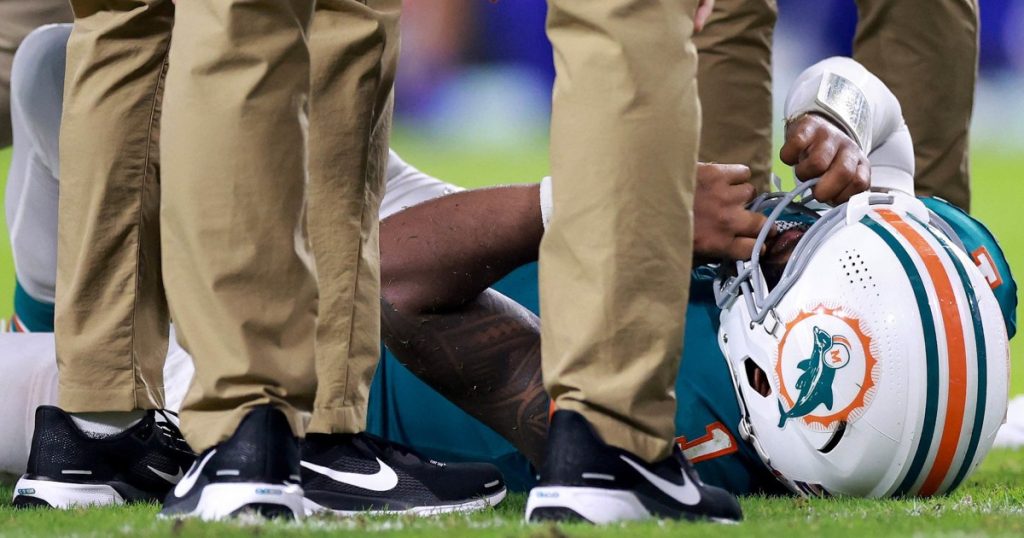Miami Dolphins quarterback Tua Tagovailoa sustained his third confirmed career concussion during a game against the Buffalo Bills, leading to concerns about his health and raising questions about the number of concussions a player can safely endure. The incident occurred during the third quarter when Tagovailoa collided with a Bills safety. He displayed the fencing response, a common reaction to traumatic brain injuries, but was not evaluated for a concussion until days later after his first injury. He has had three confirmed concussions in his NFL career, with two occurring in the 2022 season and the third on September 12, 2024.
Following his latest concussion, Dolphins coach Mike McDaniel stated that it was unlikely Tagovailoa would play in the next game against the Seattle Seahawks. McDaniel emphasized that he did not want to advise the quarterback on whether he should retire, as that decision should be left to Tagovailoa himself. Tagovailoa’s parents had previously suggested he consider retirement before the season began, but after consulting with a doctor, he decided to continue playing.
The question of how many concussions are too many is a complex one, with experts indicating that the number of concussions alone is not the main factor in determining potential health risks. The frequency and severity of the concussions, as well as the recovery time between them, play a significant role in assessing the potential for long-term effects such as chronic traumatic encephalopathy (CTE). It is not just concussions but also subconcussive blows, repetitive head trauma that does not result in a concussion, that can contribute to the development of CTE.
There is a misconception surrounding the “three-concussion rule,” which suggests that after sustaining three concussions, a player should not be exposed to further body-contact trauma. While multiple concussions can have long-term effects on brain function, particularly in children, the total number of concussions is not the sole determining factor in assessing the risk. Other factors like symptom severity, recovery time, and cumulative head impacts over a career also play a significant role in understanding the potential health outcomes.
The ability to recover from multiple concussions varies among individuals, with some people able to recover while others may experience persistent symptoms including disabilities headaches, memory problems, attention deficits, and extreme fatigue. The primary concern lies in the long-term effects of head impacts, which may manifest as CTE decades later. It is the cumulative effect of numerous head impacts, including subconcussive blows, that can lead to devastating neurological syndromes like CTE. While clinically apparent concussions raise immediate concerns, it is essential to consider the broader impact of head trauma on long-term brain health and function.
In conclusion, the case of Tua Tagovailoa highlights the complexities and uncertainties surrounding concussions in professional sports. While the number of concussions is a factor to consider, experts emphasize the importance of evaluating other variables such as recovery time, frequency of head impacts, and symptom severity. The long-term effects of head trauma, including CTE, underscore the need for caution and vigilance in monitoring and managing concussions in athletes to ensure their overall health and well-being.













